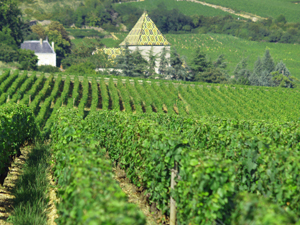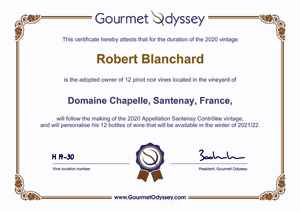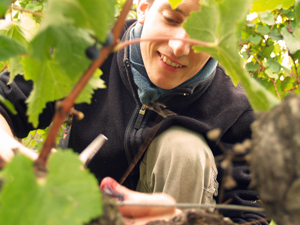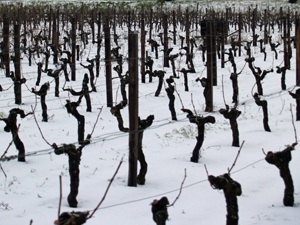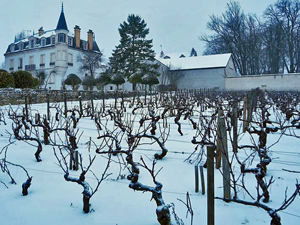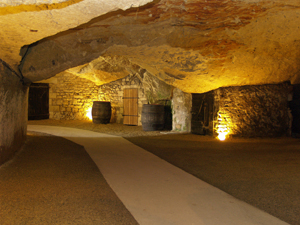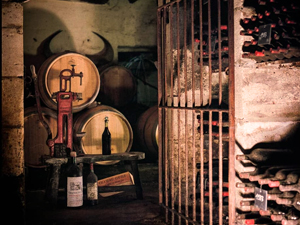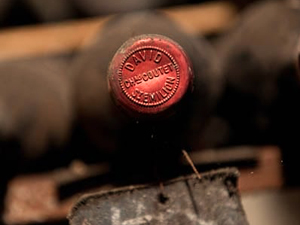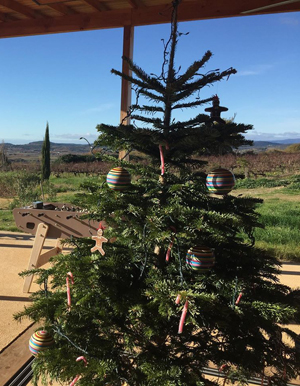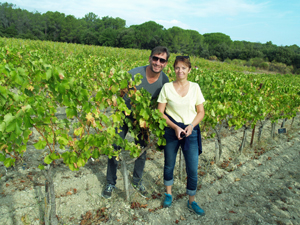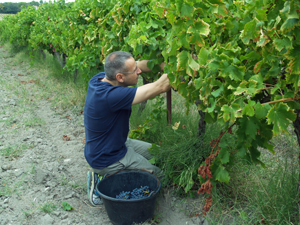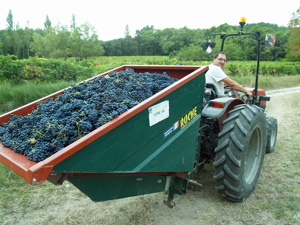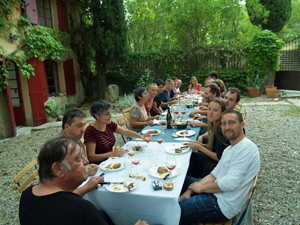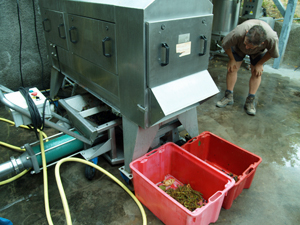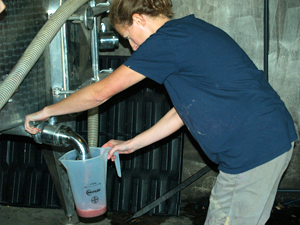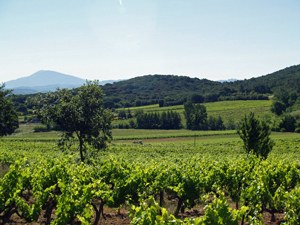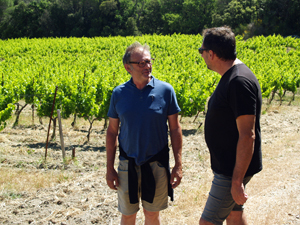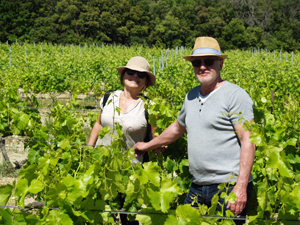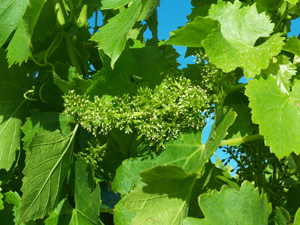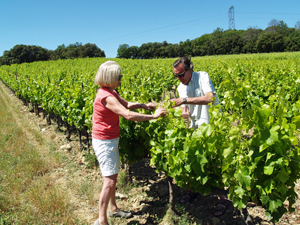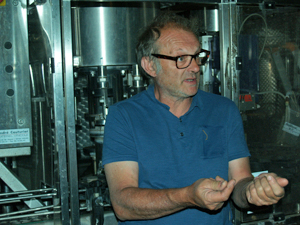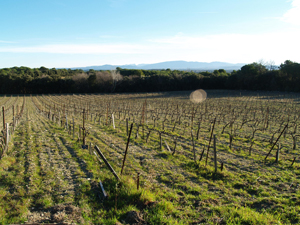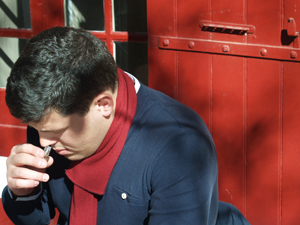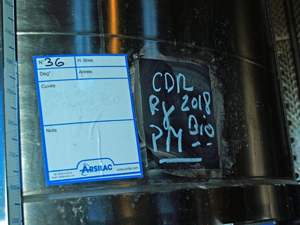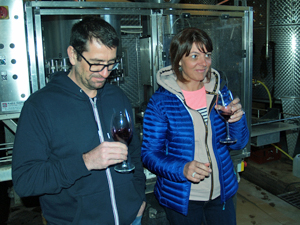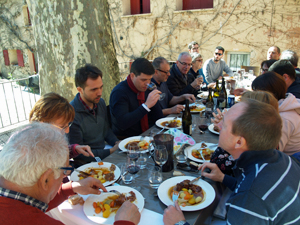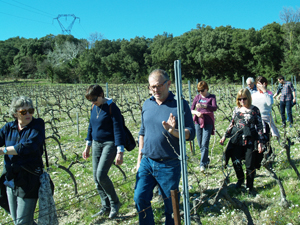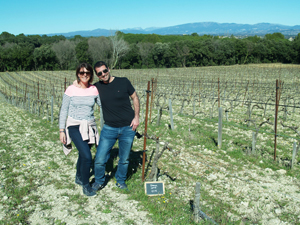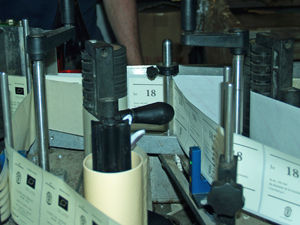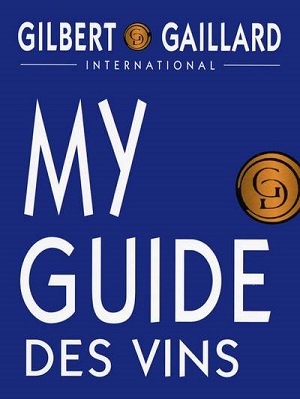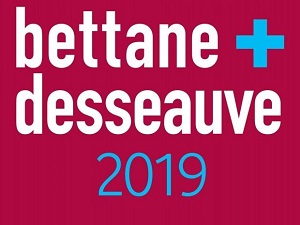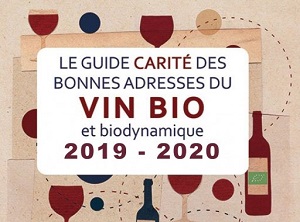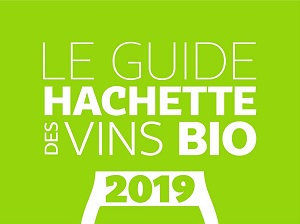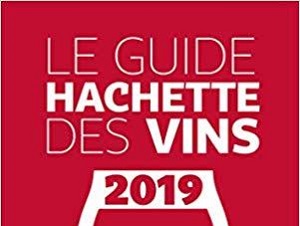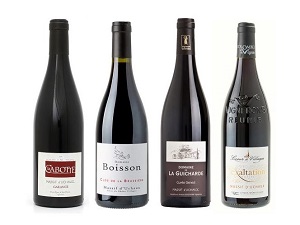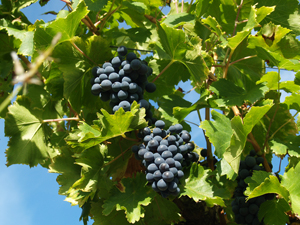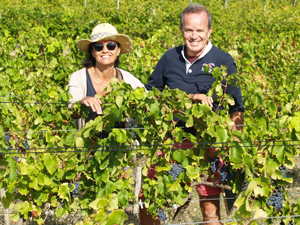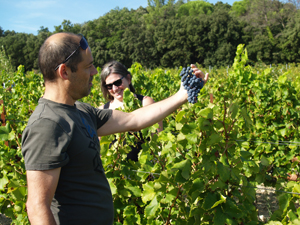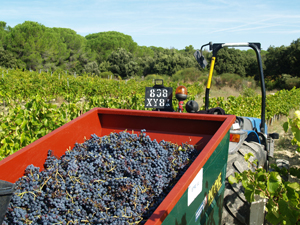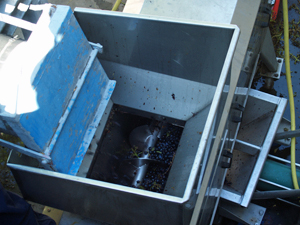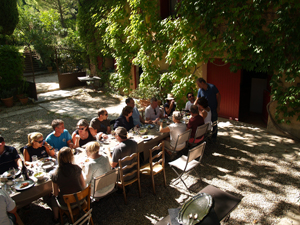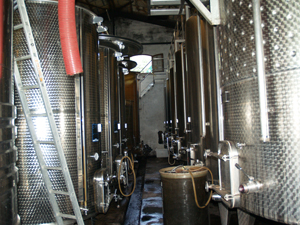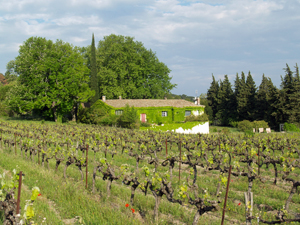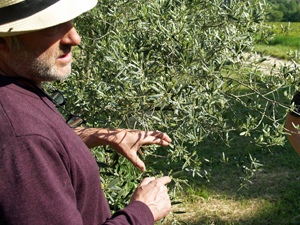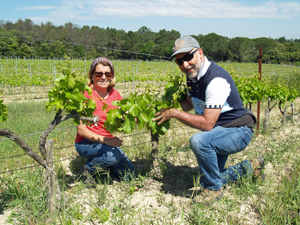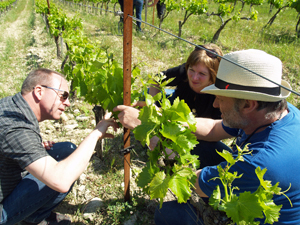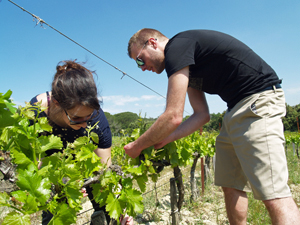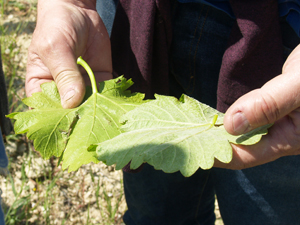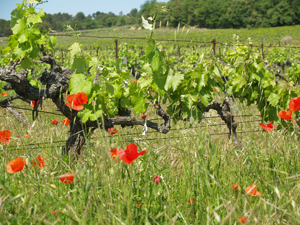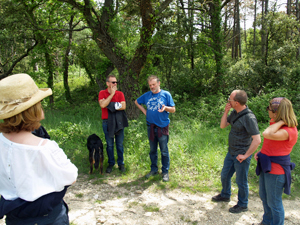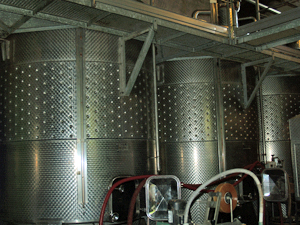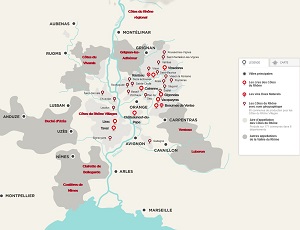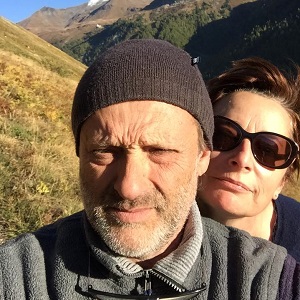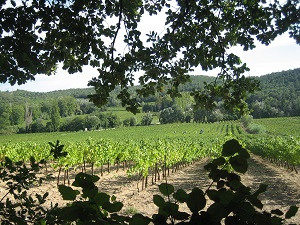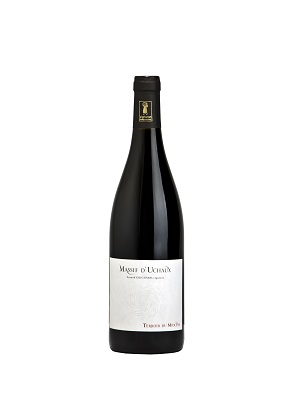Last Saturday, we were at Domaine de la Guicharde in the Rhone Valley for the Gourmet Odyssey Harvest Experience Day. We were there to help pick the grapes for this year’s harvest and to learn about all of the work involved at the winery during harvest time. As we were to discover there is more to it than just picking grapes!
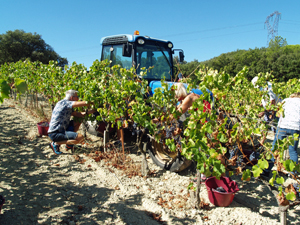
After the introductions, we walked past the winery’s olive grove and up the hillside to the vineyard where the Gourmet Odyssey adopted vines are located. The vineyard is one of the winery’s best plots, and the Grenache Noir grapes are used to make the excellent AOC Massif d’Uchaux red wine. We took a few minutes to find our adopted vines, laden with delicious ripe grapes, and take a few pictures before we started the harvest.
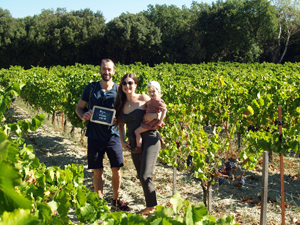
Laurence, the wine-maker at Domaine de la Guicharde, then explained which grapes to pick, and which to leave, and how to cut the bunches. Equipped with a pair of secateurs and a bucket, we then spread out among the rows and started to pick.
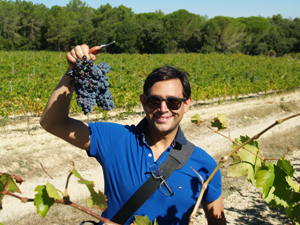
The buckets quickly filled as the grapes were generally in very good condition, and so there was little to sort. The dry and hot weather meant that there had been no mildew, the only damage being a few vines that had been too exposed to the sun, causing the grapes to burn and dry out. Once the buckets were full, we emptied them into a trailer and then carried on picking.
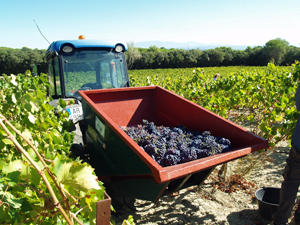
Laurence took the time to explain how she monitors the ripening of the grapes and decides when the best time to pick them is. She has to plan and juggle resources between the different grape varietals and vineyard plots, as the grapes don’t all ripen at the same speed.
The terroir of the Massif d’Uchaux is unique amongst the different Côtes du Rhône appellations, the principal characteristic being that millions of years ago, in the Miocène era, all of the surrounding land was covered by seawater. You can still make out where the ancient beach used to be, and if you look hard, you can find fossils of shell fish.
Domaine de la Guicharde is both organically and biodynamically certified, and so Laurence explained the difference between the two approaches, and how they influence the work in the vineyard and cellar.
After the morning’s hard work and effort, the aperitif was very welcome! Back in the courtyard of the winery, Laurence served us a nice cold glass of her rosé.
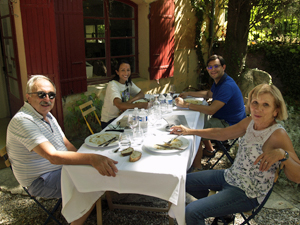
We then sat down to a delicious lunch, paired with other wines from the winery. The rich and complex 2019 Côtes du Rhône “Autour de la Chapelle” white wine perfectly accompanied the Millefeuille of aubergines, confit tomatoes with fresh goats cheese and courgette coulis. We enjoyed the fruity 2019 Côtes du Rhône “Pur Rouge” red wine with the main course of roast veal, mushroom and épeautre risotto, finishing with the more powerful and spicy 2017 Côtes du Rhône Massif d’Uchaux red with the cheese platter and chocolate cappuccino cream dessert.
After lunch we made our way to the chai, where the grapes that we had harvested were waiting in the shade. Our next job was to put the grapes into the vat. To do so we emptied the trailer of grapes slowly into a hopper where the grapes pass through a de-stemming machine to separate the berries from the stalks.
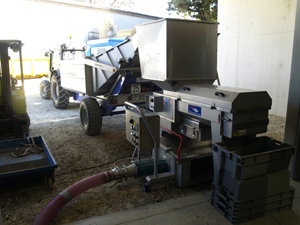
The grapes are then pumped through a large tube into one of the vats. Laurence explained how the fermentation process will transform the sugar into alcohol, and how the wine will extract the colour and tannins from the grapes skins during the maceration period.
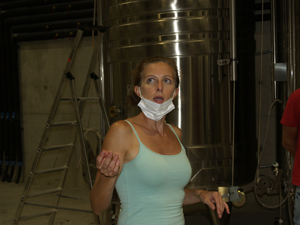
It’s an exciting year, because the 2020 vintage will be the first to be made in the new chai. Building started in February, and despite a break in work during the lockdown period, the main shell of the building was completed and the fermentation hall equipped with the essential equipment just in time for the start of the harvest. It was touch and go for a while, but the much larger space means that Laurence and her team will be able to work in much better conditions.
We finished the day by tasting the juice from the grapes that we had picked. It was cloudy in colour and very sweet with the sugar that is needed to make the wine. We then compared it with the grape juice from another vat that had already started the fermentation process.
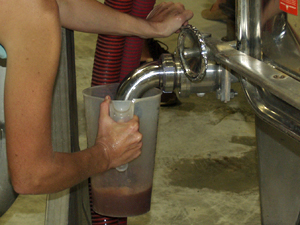
We’ll be back next year for the Vinification Experience Days to see how this year’s vintage has progressed and to learn about all of the work that still remains between now and the time that the wine is ready for bottling. Many thanks to Laurence and her team for looking after us so well during the day.



